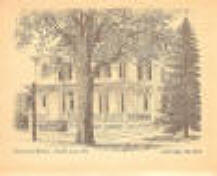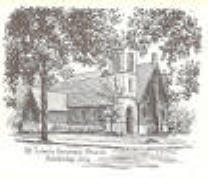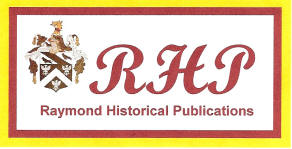|
|
|
Last time: We revisited the run up to the Civil War in Cambridge and around America in the 1840s and ‘50s. (The conflict itself was already covered here, Chapter V, May 26, 2011.)
Chapter 18: Post-Civil War, The Gilded Age, Part I - 1865-1880 Before sketching the post-war years in Cambridge and across the land, let’s hammer one final nail in the coffin of an adolescent 19th century America, considering the early embrace of slavery and the decades of bitterness that led to the first cannon shot at Ft. Sumter, SC, in April of 1861. In April ‘65 Union General Sammy Grant (known by his comrades) accepted the surrender of the Army of Northern Virginia commanded by Bobby Lee (only his folks called him that.) Thus ended the four year tragedy but not before stark battle scenes were captured by artists who sketched the firefights in pencil and charcoal under the blazing sun, through cold driving rain, by the flickering light of campfires. Within days their work was cut into woodblocks for the national print while photohounds like Matthew Brady, toting primitive wet-silver gear, recorded chilling frames of fields and hedgerows strewn with thousands of the fallen. For the first time war carnage made its way swiftly to the eyes of an aghast American public who implored their politicians to end the madness, while Nurse Clara Barton heroically did what she could during the bloodletting, eventually giving birth to the American Red Cross (1881). Recent interpretation of data from the 1870 U.S. Census – 38.5 million including Blacks with new citizenship – has revised earlier casualty figures from 620,000 to upwards of three quarters of a million, killed, wounded, missing, Yank and Reb, slave and free. With the war’s end, hope flowed from coast to coast that life would return to normal but for many it could not. Thousands were crippled and many never made it home to pick up reins and plows, hammers and tongs. Today, of course, we revere them at Arlington and Gettysburg and in countless hometown cemeteries including those about Southern Washington County. Within days of Lee’s capitulation, and at the height of national jubilation, President Abraham Lincoln was shot down. We read all about it in thousands of accounts, historic and contemporary, including the current well-received Killing Lincoln (Bill O’Reilly, Fox News, with Martin Dugard).) In 1958, a young Army dependent was chauffeured through the streets of Washington Barracks, D.C. (Fort McNair) past a tennis court, and was told that 93 years earlier several enemies domestic were strung up on the very site for their part in the conspiracy, including one Mary Surratt. But not John Wilkes Booth who made a quick exit stage left, only to have an agent’s bullet leave the bad actor writhing in agony for a time until Satan collected his soul. That spring of 1865 the death of the president plunged America into despair since it was known Mr. Lincoln had a passion and a plan to heal the nation. But VP Andrew Johnson, a blatant racist, took the reins but after sparring with the Senate was bound into the books as the first president impeached, yet not the last in a nation of laws (even if the footnote reads a blue dress and DNA; not exactly the museum piece of a stovepipe hat.) On a more upbeat note, several Cambridge institutions trace their lineage to the immediate Post-War era. On Broad Street a classic piece of two-story architecture was built c. 1865 by John Smith, a local bank officer, with wrap-around veranda and gingerbread exterior molding (see illustration), today home to the Cambridge Historical Society and Museum, beckoning all to peruse a variety of displays that give life and purpose to the Cambridge past. In April 1866, after years of mud wrestling in the swamp near today’s Memorial Park, folks from Cambridge Corners on the west end and North White Creek to the east incorporated the Village of Cambridge and began to fill in what became a navigable cross-town Main Street. That May the Cambridge Fire Department was established with the formation of J.J. Gray Engine Company #1 and J.J. Gray Hose Company. About that time Saint Luke’s Episcopal Church was chartered with its first church building completed by ‘69 (second illustration.) Click on thumbnail pictures to see larger views Re-admittance to the Union by the rebellious states was not a given. Each was administered by a U.S. Army general until a new State Constitution was approved and all state officials pledged their allegiance to the USA. This took several years with TN the first (July 1866) and GA the last (July 1870). In 1867 the Territory of Nebraska was granted statehood, stitching a 37th star on Old Glory. Also that year, in one of history’s slickest real estate deals, pennies on the dollar, we acquired Alaska from the Russians who decided to retreat from the hemisphere, abandoning depleted sea otter herds, grand Orthodox churches and the sacred icon art form. But they also left us indigenous seal and caribou hunters, ten thousand glaciers and ten million lakes, countless salmon runs and the surrealistic Aurora Borealis. And enough land for not one, not two, but eight U.S. National Parks. In 1869, the father of a future Cambridge resident set foot in Fort Yukon, AK to strike the illegal Union Flag and raise the Stars and Stripes (details in a later chapter.) Meanwhile, Texas cattle provided a new livelihood for mustered out soldiers, Blue and Gray. Abandoned and free ranging during the War, Longhorns and others were rounded up and driven north along the Chisholm and other trails to Denver, Kansas City and Chicago stockyards to fuel mining and Indian fighting and to satisfy Eastern palates. That was the genesis of a gritty piece of Americana, the rodeo, cowboys and gals showing off their skills in such disparate venues as the small town arena and Madison Square Garden. In 1868, war hero Grant was elected our 18th President and served two terms through ‘76, but he made for a better battlefield general than chief exec as Reconstruction politics fostered rampant cronyism and corruption. Lincoln’s spirit of reconciliation had died with him, lost in a haze of carpet-bagging recrimination across the South that fostered decades of Jim Crow laws. However, 1869 did chalk up two national milestones of note. The discovery in northern Minnesota of the Mesabi Iron Range opened the second American Industrial Revolution (1870-1900) by yielding a huge source of the raw material. Carrying loads to rust-belt smelters, ore lakers on Superior, Huron and Erie became the stuff of legends (e.g. Edmund Fitzgerald, RIP 1975.) The second event was the benefactor of the new steel and one of Mr. Lincoln’s pet projects, completion of the Transcontinental Railroad in May ‘69. Union Pacific track crews, dashing west from Omaha and over the Rockies, joined the Central Pacific that blasted and bored up and over the High Sierras from Sacramento when several "golden spikes" were driven into cross-ties outside Salt Lake City. One could then travel from Albany to Albany, NY to CA, in a week rather than take a month by sea from the East Coast via Panama or Nicaragua and up to San Fran. The UPRR, alive and well today, derived its name from the Union Army’s command of the Civil War; afterward the railway was engineered largely by ex-West Pointers who coaxed it into America’s first big business with component partners, oil and steel. Over the next few decades more than 150,000 additional miles of track were laid down and by 1900 four more routes linked the coasts. In 1870 President Grant decreed for the first time Christmas Day a Federal holiday which became an annual event in a decidedly Christian nation, albeit unofficial (… as it was in the beginning, is now, and shall be forever and ever….) Through the 1870s and ‘80s America elected another string of so-so presidents: Hayes (‘77); Garfield (‘81); Arthur (also ’81, for the gunned down Garfield); Cleveland (‘85); B. Harrison (‘89, grandson of W.H.) During these years society emulated Mother England’s Victorian Age in the East while beyond the mighty Mississippi settlers on the American Frontier dealt with life on the edge, with shootouts and sheriffs standing tall, and the Indian Campaigns from Little Big Horn (1876) to Wounded Knee (‘90). By the way, the bones of George Armstrong Custer – Civil War hero yet Indian Wars goat – repose, not in a windswept Montana meadow but beneath an obelisk and the shady arbors of the USMA cemetery. By the early 1870s, the oil industry was centered in Cleveland and steel in Pittsburg, largely for the railroads. Electric subways were burrowed beneath city streets and train tubes bored under rivers and bays during the birth of modern American civil engineering. Buildings began to scrape the sky and grand RR lodges blanketed the nation. Modest ones as well like the Cambridge Hotel, a village centerpiece for well over a century with a history rich in apple pie ala mode and periodic revitalization, yet a strain to faithful owners to keep the doors open and the beer flowing. While astronomy was born in the eyes of Antiquity and bloomed through Galileo’s telescope in 1610, by 1872 the USA joined the global astrophysics club with a couple of firsts: the initial photograph of starlight spectra, Vega’s (by H. Draper); and the discovery of the two Martian moons, Deimos and Phobos (by A. Hall, 1877). The Transit of Venus across the Sun is current news and the 1874 event was no less noted in the world press (with that ancestor of a later Cambridge resident a direct witness in Tasmania; stay tuned for details.) In 1872 Yellowstone Park, sitting atop a dormant super-volcano in Wyoming Territory, was tapped as our first National Park. Spurs off the transcontinental RR routes gave better access for folks from Cambridge and the East to these natural treasures, including Grand Canyon and Yosemite. While the Panic of 1873 depressed much of society through Post-War over-expansion and silver coinage politics, in 1875 amusement and payoffs for the fortunate few were had at the first Kentucky Derby run at Churchill Downs, though hoofs at Saratoga had been kicking up mud and dust since ‘63. The first game of American football resembling today’s was played in ‘75 at the other Cambridge (across from Beantown), Tufts University vs. Harvard. The true granddaddy of college’s Bowl Championship Series creature – spawned incestuously from the hallowed Rose, Orange, Cotton and Sugar bowls – was likewise the forbear of today’s wildly popular Super Bowl. Though Cambridge Washington Academy was closed in 1872, it reopened in ‘73 as Cambridge Union of the West District, while Putnam Union School of the East District also hung out its shingle that year. In the summer of 1873, the Village held a stirring recollection of the founding of "The Cambridge District" in 1773, commemorated in the old Washington County Post. And of course, in 1876 America held a big 100th birthday bash while out west Colorado entered the Union at #38, today billing itself the Centennial State. The folks of the Cambridge District celebrated in nothing less than patriotic splendor and zeal, at bandstands and along Main Street, with beer and bunting and blasts of fireworks. Closing out the decade, in 1879 another of the signature Cambridge landmarks, the Jerome B. Rice Seed House, was completed along with the Village’s iconic footbridge. A stone wall was subsequently built (1883) beneath the bridge along the brook in front of the Seed House to hold back high water, with mixed success over the years! By the end of the 1870s, Mark Twain, who visited Cambridge during the era and is said to have skewered our town with his acerbic wit, had dubbed the era America’s "Gilded Age."
Next time: Chapter 19, The Gilded Age, Part II – 1881-1900Sources: A History of the Cambridge Area (R. Raymond, T. Raymond 2010); Cambridge Historical Society and Museum; Saint Luke’s Episcopal Church; Ken Gottry Jr. (Contact the author at tmraymond4@gmail.com.) |
|
CAMBRIDGE HISTORY LIVES © 2012 Thomas M. Raymond
|



